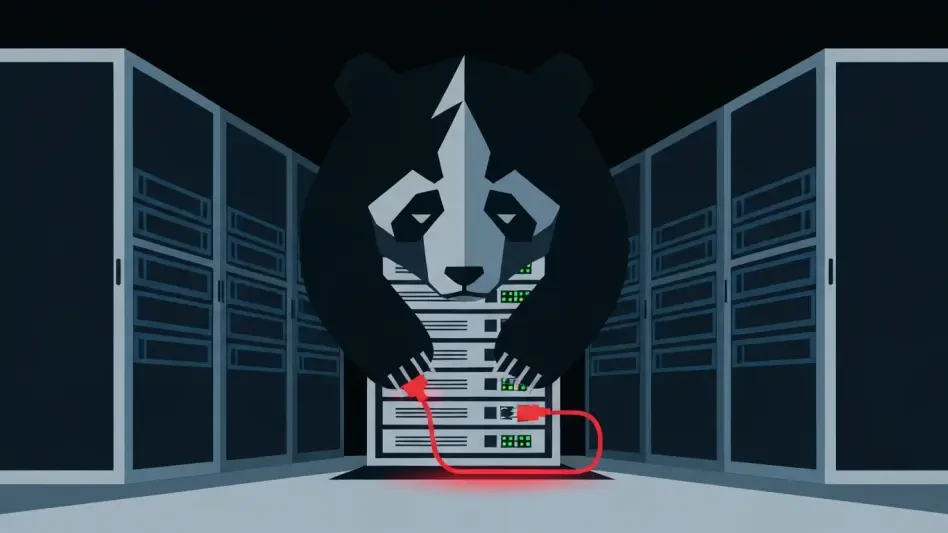In an era where digital networks underpin nearly every facet of society, the concept of warfare has undergone a seismic shift, moving beyond the physical realm of tanks and troops to the intangible yet devastating domain of cyberspace. This transformation, often likened to the rapid, disruptive tactics of historical Blitzkrieg but executed through bits and bytes, has ushered in a new age of conflict known as “Bitskrieg.” Cyberwarfare is not merely an adjunct to traditional military operations; it has become a standalone force capable of reshaping global power dynamics. From crippling critical infrastructure to manipulating public opinion, cyber tools are rewriting the rules of engagement, challenging nations to adapt or risk catastrophic vulnerability in a landscape where information is both the ultimate weapon and the most critical target.
The implications of this shift are profound, touching not just military strategists but entire populations. Unlike conventional wars with defined battle lines, cyber conflicts operate in a shadowy realm where attackers can remain anonymous, striking from anywhere with devastating effect. This persistent state of tension, often described as a “Cool War,” blurs the boundaries between peace and hostility, creating an environment where a single breach can destabilize economies or sow societal discord. As real-world incidents like the Stuxnet attack on Iran’s nuclear facilities demonstrate, the ability to disrupt without direct confrontation marks a fundamental redefinition of what constitutes victory in modern conflict.
The Nature of Cyberwarfare
A Digital Revolution in Warfare
The advent of cyberwarfare represents a revolutionary change in how conflicts are waged, paralleling the transformative impact of mechanized warfare in the early twentieth century. Coined as “Bitskrieg,” this term captures the speed and shock of digital attacks, where cyber tools can penetrate defenses and disrupt systems in mere moments. Far from being a niche concern, this form of warfare has become a central pillar of national security, as adversaries exploit vulnerabilities in networks to achieve strategic goals. The capacity to disable power grids, interfere with financial systems, or even sway elections through disinformation campaigns illustrates a battlefield that extends into the digital lives of civilians, making everyone a potential target in this new era.
Beyond the military sphere, the societal impact of cyberwarfare is staggering, as it erodes the very foundations of trust and stability. A well-executed cyberattack can paralyze essential services, leaving populations grappling with the fallout of disrupted healthcare, transportation, or communication networks. Unlike traditional combat, where damage is often visible and contained, the effects of a digital assault can ripple unseen, undermining confidence in institutions and governments. Historical examples, such as the manipulation of social media to influence political outcomes, underscore how cyber operations target the psyche as much as infrastructure, redefining conflict as a struggle for control over perception and reality.
This transformation demands a complete rethinking of military and civilian preparedness, as the tools of war are no longer confined to physical arsenals. Cyberwarfare’s ability to strike without warning or clear attribution complicates defense strategies, often leaving nations reacting to crises rather than preventing them. The pervasive nature of digital connectivity means that no sector is immune—private companies, public utilities, and individual citizens are all part of the battleground. As a result, the urgency to develop robust cyber capabilities and policies has never been greater, pushing global powers to prioritize this invisible front in a way that reshapes the very essence of security and conflict.
The Invisible Battlefield
At the core of cyberwarfare lies the battle for information dominance, where the rapid and secure flow of data determines success or failure in modern conflict. The ability to make swift decisions and coordinate actions across vast distances hinges on reliable networks, yet this dependency creates a critical vulnerability. If information is intercepted, corrupted, or delayed, the consequences can be disastrous, as adversaries exploit these weaknesses to gain the upper hand. Nations must navigate the delicate balance between speed and security, a challenge compounded by the fact that many current systems prioritize efficiency over protection, leaving them exposed to increasingly sophisticated digital threats.
This persistent state of digital tension, often termed a “Cool War,” reflects a new normal where outright destruction is replaced by continuous disruption. Unlike traditional warfare with clear declarations and ceasefires, cyber conflicts simmer beneath the surface, with attacks on infrastructure or data integrity designed to weaken rather than annihilate. This shadowy dynamic makes it difficult to distinguish between peacetime competition and active hostility, as seen in operations targeting everything from government databases to private sector assets. The murkiness of attribution further complicates responses, as pinpointing the source of an attack remains a technical and diplomatic hurdle, often delaying or preventing effective countermeasures.
The stark imbalance between offensive and defensive capabilities in cyberspace exacerbates these challenges, creating an environment where attackers hold a distinct advantage. Exploiting vulnerabilities can be done at a fraction of the cost and time it takes to build robust defenses, leaving even technologically advanced nations scrambling to keep pace. Traditional security measures, often compared to outdated fortifications, are ill-equipped to counter the agility and anonymity of digital assaults. This asymmetry highlights a pressing need for innovative approaches to cybersecurity, as reliance on reactive solutions continues to expose critical systems to risks that could culminate in catastrophic breaches with far-reaching consequences.
Adapting to a New Era of Conflict
Organizational Shifts for a Networked Age
Adapting to the realities of cyberwarfare necessitates a fundamental overhaul of military and governmental structures, moving away from cumbersome, hierarchical models toward more dynamic frameworks. Large bureaucracies, rooted in industrial-age thinking, struggle to respond to the rapid tempo of digital conflict, where decisions must be made in real time. Instead, small, agile units empowered by networked information systems are proving to be the way forward, capable of executing coordinated “swarming” tactics that overwhelm adversaries through speed and precision. This shift reflects a broader recognition that flexibility and adaptability are paramount in a domain where threats evolve faster than traditional chains of command can react.
The integration of cutting-edge technologies like artificial intelligence and robotics further underscores the need for organizational transformation in the face of cyberwarfare’s demands. These tools promise to enhance decision-making by processing vast amounts of data at unprecedented speeds, while also enabling automated responses to threats. However, they introduce new risks, as compromised systems could trigger unintended escalations or be weaponized by hostile actors. The potential for future battlefields to be dominated by code-driven operations rather than human soldiers raises critical questions about control and accountability, pushing military leaders to rethink not just structure but also the ethical boundaries of such advancements.
Geopolitical Challenges and Responses
Cyberwarfare is profoundly reshaping international relations, as state-sponsored operations become tools for asserting influence without resorting to open conflict. Incidents attributed to nations like Russia, targeting regions such as Ukraine and Georgia, exemplify how digital attacks can undermine sovereignty by disrupting critical systems or spreading disinformation. These actions achieve strategic objectives—weakening adversaries or sowing internal discord—without the political and economic costs of traditional warfare. The result is a geopolitical landscape marked by persistent instability, where trust between nations erodes under the weight of unseen but impactful cyber maneuvers that challenge the very concept of national borders.
Addressing these geopolitical tensions requires the establishment of international norms to govern behavior in cyberspace, a task fraught with obstacles. Proposals for cyber arms control, inspired by agreements on chemical weapons, aim to set behavioral guidelines that curb the most destructive uses of digital tools. Yet, deep-seated mistrust among global powers, coupled with the difficulty of verifying compliance in an inherently opaque domain, hinders progress. Without a framework to mitigate these risks, the potential for escalation remains high, as nations continue to develop and deploy cyber capabilities with little restraint, perpetuating a cycle of disruption that threatens global stability.
Strategies for a Cyber-Dominant Future
Building Resilient Defenses
As cyberwarfare emerges as a defining feature of modern conflict, the urgency to develop resilient defenses has become a top priority for nations worldwide. The glaring asymmetry favoring offensive capabilities necessitates a shift from outdated, reactive measures to proactive strategies that prioritize security from the ground up. Proposals for universal encryption and the adoption of robust cloud architectures offer potential pathways to safeguard critical data, though their practical implementation remains a subject of intense debate. Critics argue that while these solutions sound promising in theory, they lack sufficient real-world testing to prove their effectiveness against the sophisticated tactics employed by state and non-state actors alike.
Moreover, building resilience in cyberspace goes beyond technical fixes; it requires a cultural shift in how societies approach digital security. Governments and private entities must invest in training and awareness to close the human error gap, often exploited as the weakest link in cyber defenses. Collaborative efforts between public and private sectors are also essential, as the interconnected nature of global networks means that a breach in one area can cascade across borders. While no defense can be entirely foolproof, fostering a mindset of continuous adaptation and improvement could significantly reduce vulnerabilities, ensuring that nations are better prepared to withstand the inevitable wave of digital threats.
Securing the Future of Global Security
The centrality of cyberwarfare in national security strategy cannot be overstated, as its capacity to alter conflict outcomes without traditional combat forces a radical reevaluation of priorities. Nations must recognize that cyber capabilities are not a peripheral concern but a core component of military and economic power, demanding substantial resources and strategic focus. This includes not only bolstering defenses but also cultivating offensive tools to deter potential aggressors through the threat of retaliation. Striking this balance is delicate, as overemphasis on offense risks fueling an arms race in cyberspace, while neglecting defense leaves critical systems exposed to exploitation by adversaries.
Looking ahead, the path to securing global stability in a cyber-dominant world hinges on sustained international dialogue and cooperation, despite the challenges. Even as mistrust persists, incremental steps toward agreements on acceptable conduct in cyberspace could lay the groundwork for broader accords. Simultaneously, investing in emerging technologies to detect and neutralize threats before they materialize offers a proactive edge. Ultimately, the lessons of past conflicts have taught us that adaptation is key, and history reflects a continuous effort to address the evolving nature of warfare. Moving forward, nations need to commit to innovative solutions and collective action to navigate the unseen battlegrounds that have redefined security in the digital age.








